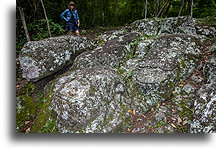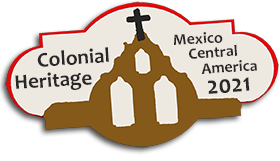Pre-Columbian delivery room
November 27
We camped in Guatemala an hour drive from the Honduras border. After a morning hot shower with water heated by a Jeep engine, we headed for Copan. We traveled the road to the border twice the day before. All that was because of the closed border. Today, the same road took us twice as long. This was due to road closure for construction. We waited in the car, watching the locals in the open pickups. Everyone, including women and teenagers, had a habit of spitting profusely once every few minutes. It was disgusting in the long run. We dealt with border formalities in a record time of 20 minutes. This was because we did not cancel our Honduran car permit as we were entering El Salvador two days earlier. Thanks to this, we have now saved time and money. It is worth adding that this Guatemala-Honduras border is unusual for Central America. There are no separate buildings for each side. Officials from both countries share one common building on the border.



Upon arriving to town of Copán Ruinas, we parked Balios on the grounds of El Bosque Hotel and set out to explore the area. Almost immediately, we hired a local tuk-tuk, which took us to a pre-Columbian delivery place, a forest location where Maya women gave birth to their children.



The Los Sapos (or toads) archaeological site south of the Copán Acropolis contains a small set of carved rocks, some of which are toad-shaped. Such Late Classic period sculptures were popular in the countryside of the Copan Valley. They are believed to be part of a folk fertility cult and marked the places where women gave birth to their children. The birthing positions of Maya mothers were standing or kneeling. It required the presence of father, because during the birth mother was holding to him. The midwife assisted the entire time. She was the one who knew how to deliver the baby and how to heal the newborn and the mother.












